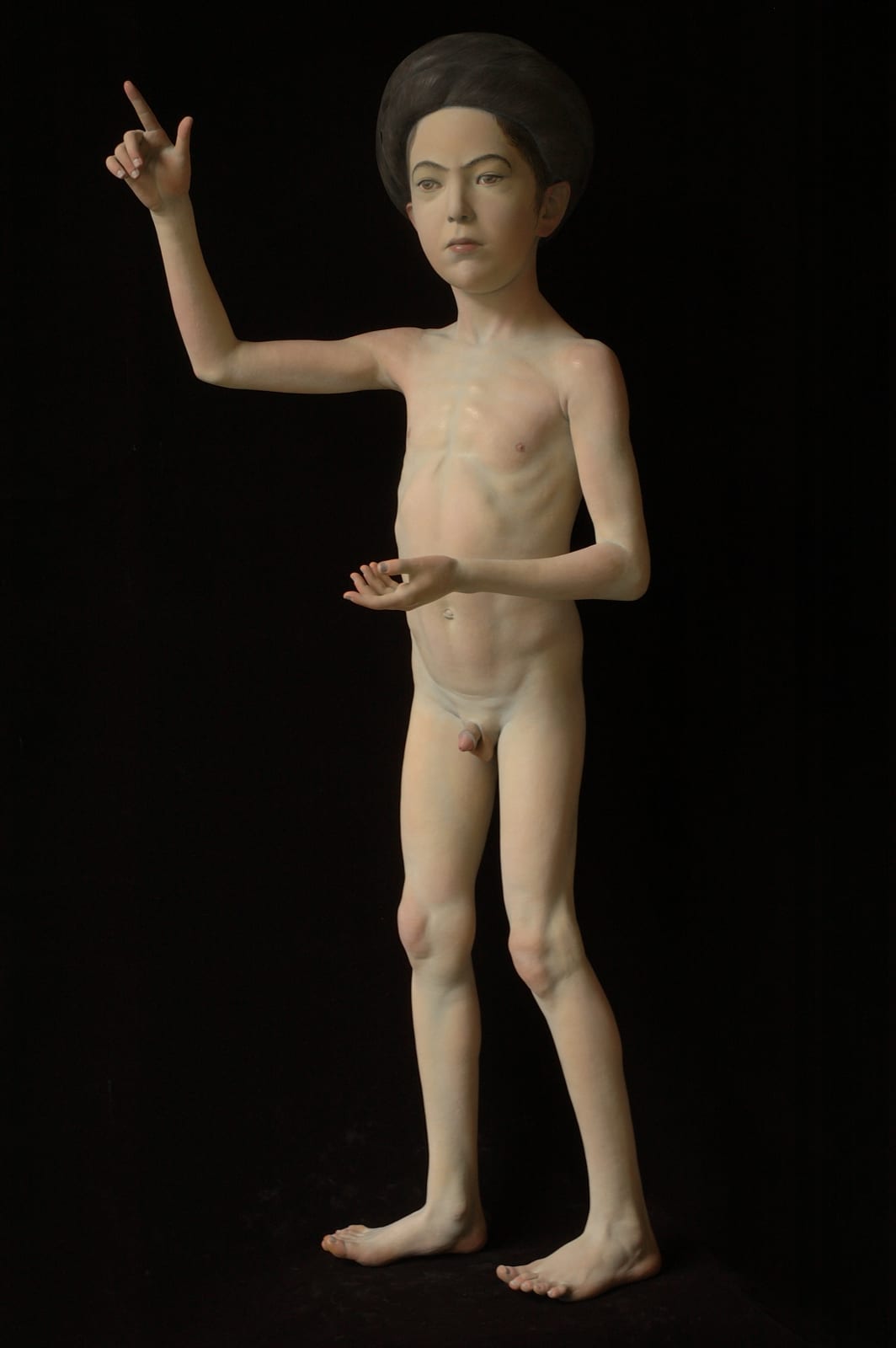Power Figures is the latest instalment in Judy Fox's exploration of human nature and culture through the transplantation of iconic images into the bodies of flawed mortals. As in prior work, Fox mines her images from art historical sources whose gestures from the past seem to suggest another meaning in the present. Another level of interpretation emerges through varying combinations and dramatic arrays of figures in installation.
Power Figures is composed of four life size young boys on a line of high pedestals, each standing with right arm raised. The figures are as meticulously rendered as polychrome sculpture in the European tradition. But they are ethnically diverse and hold positions that relate to art historical prototypes from their various cultures. The Russian Holy Man, with the flowing hair and golden tones of a Christian orthodox icon, is posed like a famous photograph of the mesmerizing Rasputin. A knife-holding wooden fetish translates into the menacing African Nkondi. Ayatollah, in the classic finger waving lecturer's pose, is positioned flatly, as if drawn by a Persian miniaturist. The demon-red Divine Warrior retracts his fist like the fierce guardian figures posted at Chinese Buddhist tombs. Despite the disparate origins of the poses, they form a common display of masculine domination.
But the psychological impact of Fox's work is not a matter of historical reference. The clinical observation of the body seems, uncannily, to channel the personality of an individual. The works read as real children, somehow dressed up in fancy coiffure, in the roles of heroes who are stripped of clothing. Is this children at play, enforced behavior, or projection of an adult idea upon an innocent child? It is up to viewers to make sense of these conflicts of nature and contrivance. and to reconcile them with their own responses to the figures that confront them, naked and exposed to the insecure contemporary eye.
The return to sculpted figures prevalent in recent years was pioneered by Judy Fox in the 1980's. With an audience accustomed to expressionism, abstraction, and conceptualism, a real looking body was surprisingly provocative, if not shocking, though it's the kind of image artists and societies have rendered since the birth of civilization. Prejudices and fears and desires are summoned as one looks at the naked flesh of man and hero. Judy Fox 's work asks history and form to speak to the present, and to contemporary conjecture about the human body, mind, and character.
Judith Fox received Bachelor of Arts (BA) degree from Yale University in 1978, and a masters degree (MA) in Art History and Conservation from The Institute of Fine Arts, New York University. She has been living and working in New York since the end of her studies and began exhibiting in 1987.


Judy Fox: Power Figures, Galerie Thaddaeus Ropac Paris Marais, 2005
Judy Fox Power Figures
3 September—1 October 2005
Paris Marais
/
Overview
Judy Fox 's work asks history and form to speak to the present, and to contemporary conjecture about the human body, mind, and character.
Power Figures is the latest instalment in Judy Fox's exploration of human nature and culture through the transplantation of iconic images into the bodies of flawed mortals. As in prior work, Fox mines her images from art historical sources whose gestures from the past seem to suggest another meaning in the present. Another level of interpretation emerges through varying combinations and dramatic arrays of figures in installation.













































































































































































